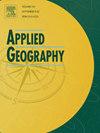Association between built environment factors and collective walking behavior in peri-urban area: Evidence from Chengdu
Abstract
Optimizing collective walking has been a pivotal strategy for alleviating the excessive reliance on private cars. As an important criterion for residents' social interaction and mobility vigor, collective walking describes the results of walking activities in streets and positively correlates with the built environments. However, limited attention has been given to the contribution of built environment factors in peri-urban areas towards promoting collective walking. Therefore, this study employed multisource data to assess the impact of these factors on collective walking in peri-urban areas. Our analysis delved into the impact of these factors on collective walking across various urban spaces and explored intervention effects through cross-classification studies that prioritize planning strategies. These results revealed that (1) The impacts of the built environment on collective walking behavior differs in peri-urban areas. (2) Diversity and distance only show significant impacts in peri-urban areas. (3) A distinct spatial mismatch between urban spatial form and collective walking behavior is observed. Subsequent urban design interventions should consider these spatial distribution differences for prioritized zoning planning. Our findings provided convincing evidence that delineated the impact of built environments in peri-urban areas that can guide government and planners to precisely design pedestrian environments through targeted intervention measures.

| 公司名称 | 产品信息 | 采购帮参考价格 |
|---|
 求助内容:
求助内容: 应助结果提醒方式:
应助结果提醒方式:


